Japan’s school lunch programs where students are involved in preparation, serving classmates, and cleaning up together have been a hot topic in social media for several years. In this article, we cover the history and development of Japanese school lunch, Japanese school lunch food, and other interesting facts.
Table of Contents
Introducing Japanese School Lunch

In Japan, school lunch has a higher purpose than simply feeding children. It helps support families finances, provide a healthy balanced diet to growing kids, and is also a form of education. How did this program come to be, and how does it work now? Read on to find out.
The Beginning: Support for Poverty
Japan found itself in poverty sometime in the late 1800s as a side effect of industrialization. As the Meiji Period started and the government sought to restore and reform Japan to its former glory, people all over the country were deeply affected, especially children who suffered from malnourishment. In Yamagata Prefecture’s Tsuruoka City, some Buddhist monks took it upon themselves to provide poor students with free nutritious meals at an elementary school. The school lunch program was inspired by their generous deeds.
By 1910, schools around Japan had started providing school lunches to poverty-stricken students. These were mostly privately financed with assistance from the city council or donations. Not only did these children receive proper nourishment, it also encouraged school attendance. Gradually, the government started getting involved with the Ministry of Education actively encouraging implementations of school lunches.
World War I & II
Things came to a head during World War I when thousands of cases of malnourished children occurred. The government took a big step offering subsidies for school lunches. And in the 1940s, the program extended to cover not just the poor but every available student. The program was greatly accepted and continued to grow and improve rapidly.
But all good things come to an end. In World War II, shortage of food dwindled the supply of school lunches and eventual stoppage due to evacuations and destruction. The number and health conditions of malnourished children was unspeakable. With the help from international aid including Allied Forces and Unicef, the donation of food supplies resurrected the school lunch scheme. A stark contrast to the usual Japanese diet is the inclusion of milk and bread as staple lunch foods.
Now: School Lunch for All
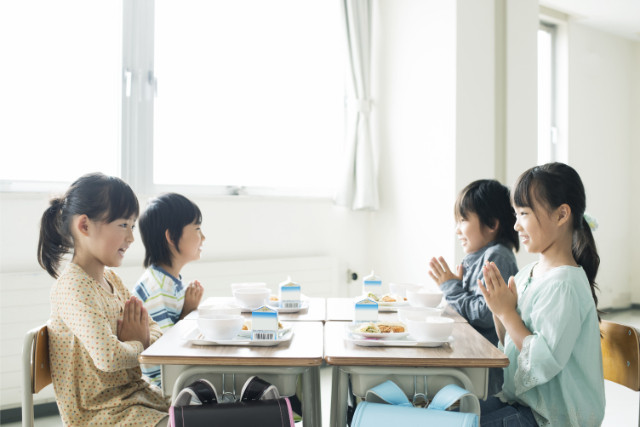
In 1954, the School Lunch Act was enacted and offered school lunch at all primary schools. This was later expanded to include all compulsory education. As the years passed, the program was refined. Now it is no longer just a food program, it is a vital part of children’s education. Students are taught proper table manners, health and nutrition education, food preparation, food hygiene, respect and appreciation, and more. The lunch menus were also revised from bread to rice-based meals plus milk. The program also provided new jobs for school nutritionists that take charge of menu and nutrition planning, cooks who work at the schools, as well as catering companies who deliver school lunches to some schools.
※ National Institute for Educational Policy Research, "School Lunch Program in Japan," p.1-4 ※ Japan Science and Technology Agency [JST], "The History, Current Status, and Future Directions of the School Lunch Program in Japan," p.3-4
School Lunches Around the World
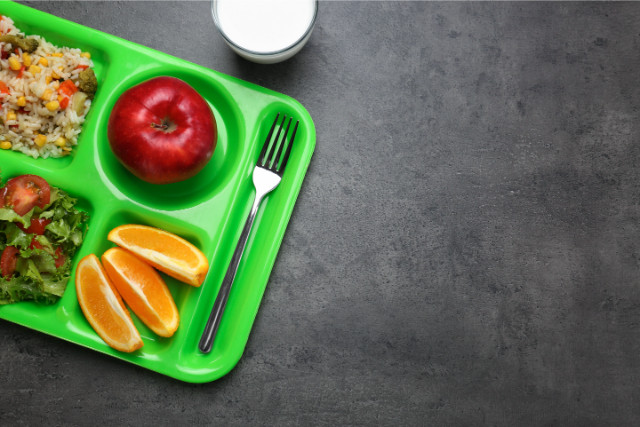
School lunches are not universal. Before we get into how Japan school lunches are, here are some school lunch programs around the world:
-
Finland is the first country to offer free school lunches and continues to do so till today. Typically a lunch meal consists of bread, meat or fish, and vegetables;
-
Italy’s school meal usually has pasta with a meat dish, vegetables and fruit dessert;
-
Sweden’s students get a hot main meal and choice of vegetables for salad;
-
South Korea has subsidized school meals that are served on metal trays. A meal typically consists of rice, soup, kimchi, and other side dishes. May include fruit dessert and yoghurt drink;
-
Brazil comes in No.2 with the largest free lunch program in the world;
-
School lunches are not the norm in India but are gradually increasing. Meals include roti (bread) with curry or dhal.
※ CNN, "How school lunches measure up in countries around the world" ※ Ranker, "What School Lunch Is Like in Different Countries Around the World"
Writer's Pick
The Japanese School Lunch Program
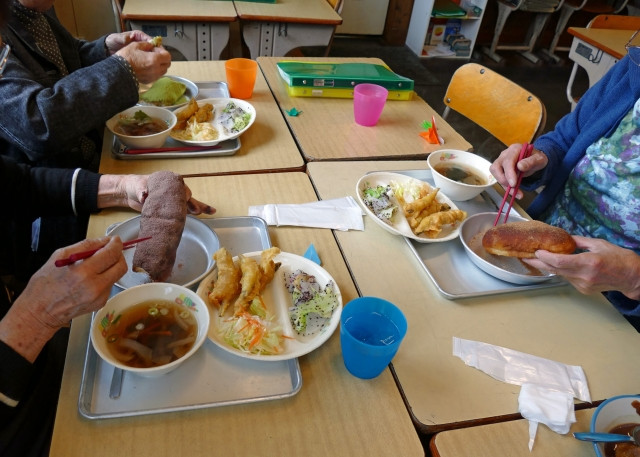
Let’s have a more in-depth look into Japanese school lunches, what they contain and how it is carried out.
Japanese School Lunch Food
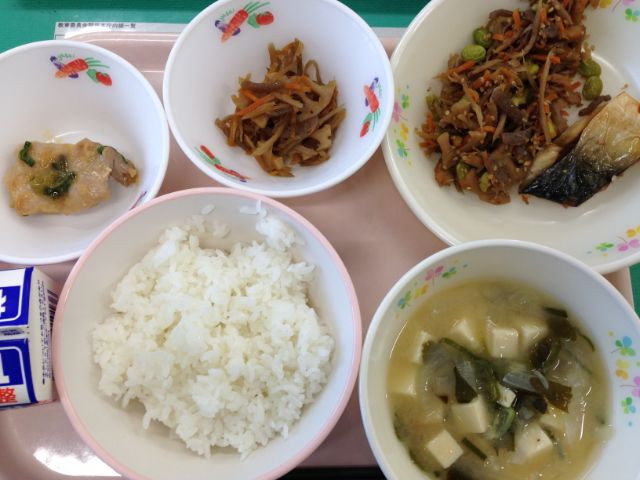
A typical Japanese School Lunch Meal consists of rice, a main dish (meat, fish, or tofu), a vegetable dish, milk, and fruits. There may also be miso soup and special days where regional dishes or foreign foods are served.
There are also days that bread replaces rice as the main carb. The food portions are carefully balanced to provide 600-700 calories, sufficient for a child’s daily activities. And of course portions get bigger in upper grades. School lunch menus are carefully planned by school nutritionist(s) taking into account any dietary restrictions, seasonal and locally available vegetables, and dislikes.
Some schools do not provide the meals for free but it would still be at an extremely reasonable (cheap) price.
※ Hunter College New York City Food Policy Center, "Japan’s School Lunch Program Serves Nutritious Meals with Food Education" ※ The Washington Post, "On Japan’s school lunch menu: A healthy meal, made from scratch"
School Lunch Program Policy & Objectives
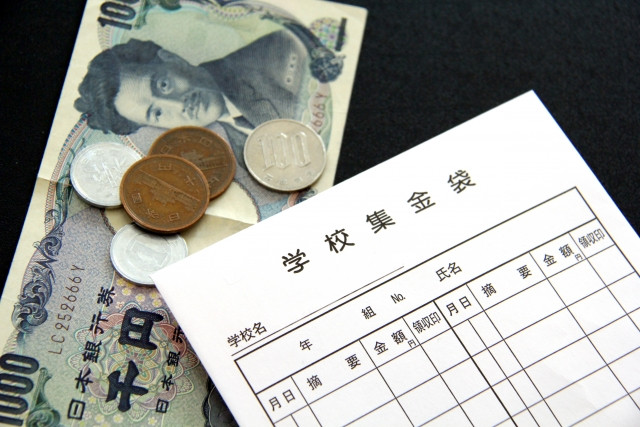
Japan only started its first school lunch program in 1923, where it mostly focused on the well-being of children living in poverty and suffering from malnourishment to help them continue their education. The program was revised in 1946 to encompass all children in Japan, and five years later, the whole country had this program.
In 1954, the School Lunch Law was passed and enforced with four main objectives:
-
To cultivate healthing eating habits in children;
-
To reinforce a well-functioning communal relationship within the school;
-
To improve children’s health by providing proper nutrition;
-
To educate children on food and nutrition.
With this, the school lunch program in Japan shifted its objectives from simply feeding children to integrating food and nutritional education into the school system. From then on, the law went under several reforms to make sure that it could keep up with the changes within the economy, environment, and society of Japan.
※ National Institute for Educational Policy Research, "School Lunch Program in Japan," p.5-7 ※ Japan Science and Technology Agency [JST], "The History, Current Status, and Future Directions of the School Lunch Program in Japan," p.4-6
Program Accomplishments
Firstly, the program has accomplished its original purpose - malnourished children. Secondly, providing free or heavily subsidized yet nutritious meals to children helps relieve the burden of poverty that some families face.
Additionally, eating these meals cultivate in children a habit of choosing healthier food options as opposed to junk food resulting in lower obesity rates and higher life expectancy. Lunch meals are designed by school nutritionists and made with locally sourced fresh ingredients. This makes the average Japanese child one of the healthiest in the whole world.
Other Interesting Facts
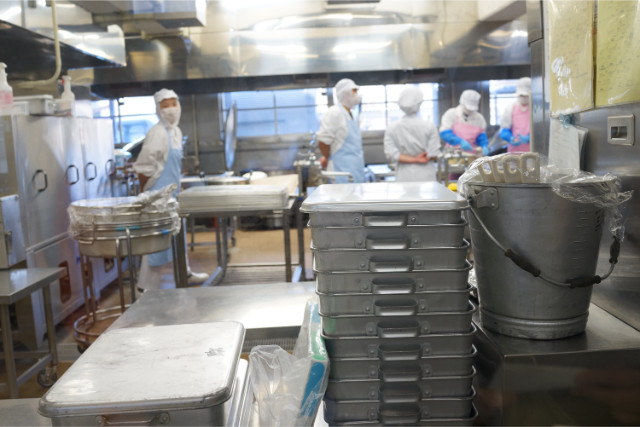
Where does the average school meal in Japan come from?
The average school meal in Japan consists of rice, vegetables, and meat or most of the time, fish. The local government would usually provide rice and milk to each prefecture.
Vegetables are an essential part of students' meals. These are always fresh as they come from local farms. Some schools have students grow their own vegetables in a small garden or have older students help out at local farms. This is to provide some basic agriculture education and more importantly the appreciation of where their food comes from, and the hardworking farmers that put their every effort into growing these vegetables. These activities not only teach humbleness in the children, it also reduces picky eaters.
※ The Washington Post, "On Japan’s school lunch menu: A healthy meal, made from scratch" ※ National Institute for Educational Policy Research, "School Lunch Program in Japan," p.7-8
What does school lunchtime look like?
Lunch is usually served in designated lunchrooms or the student’s own classrooms as opposed to cafeterias. Students usually take turns being on lunch duty. Those in charge don sanitary wear and are tasked to serve their fellow classmates, filling up their plates with the day’s menu. When everybody is served, an announcement is made detailing the menu, nutritional facts, source of ingredients. After giving their thanks, everybody digs in.
After eating, everybody helps clean up, including putting away plates before going to brush their teeth.
It’s hard to visualize what this looks like in an article, so have a look at this educational video.
Summary
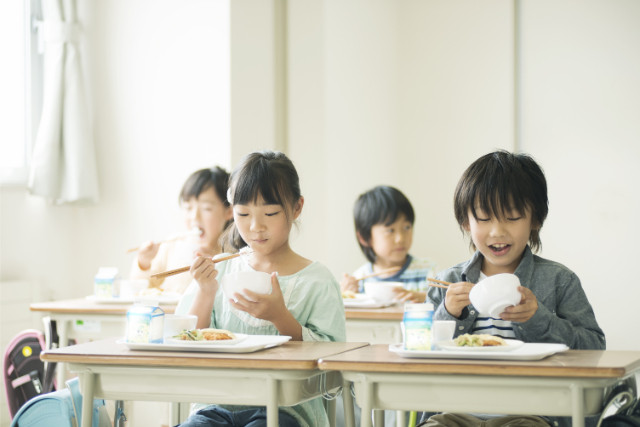
Japanese are known for their longevity and healthy lifestyles. In hindsight, this was only possible with proper eating habits and healthy food options. In realizing the importance of this, Japan has taken proper steps to build up a proper foundation for their future generations. Only robust and healthy future leaders can the country truly prosper.































